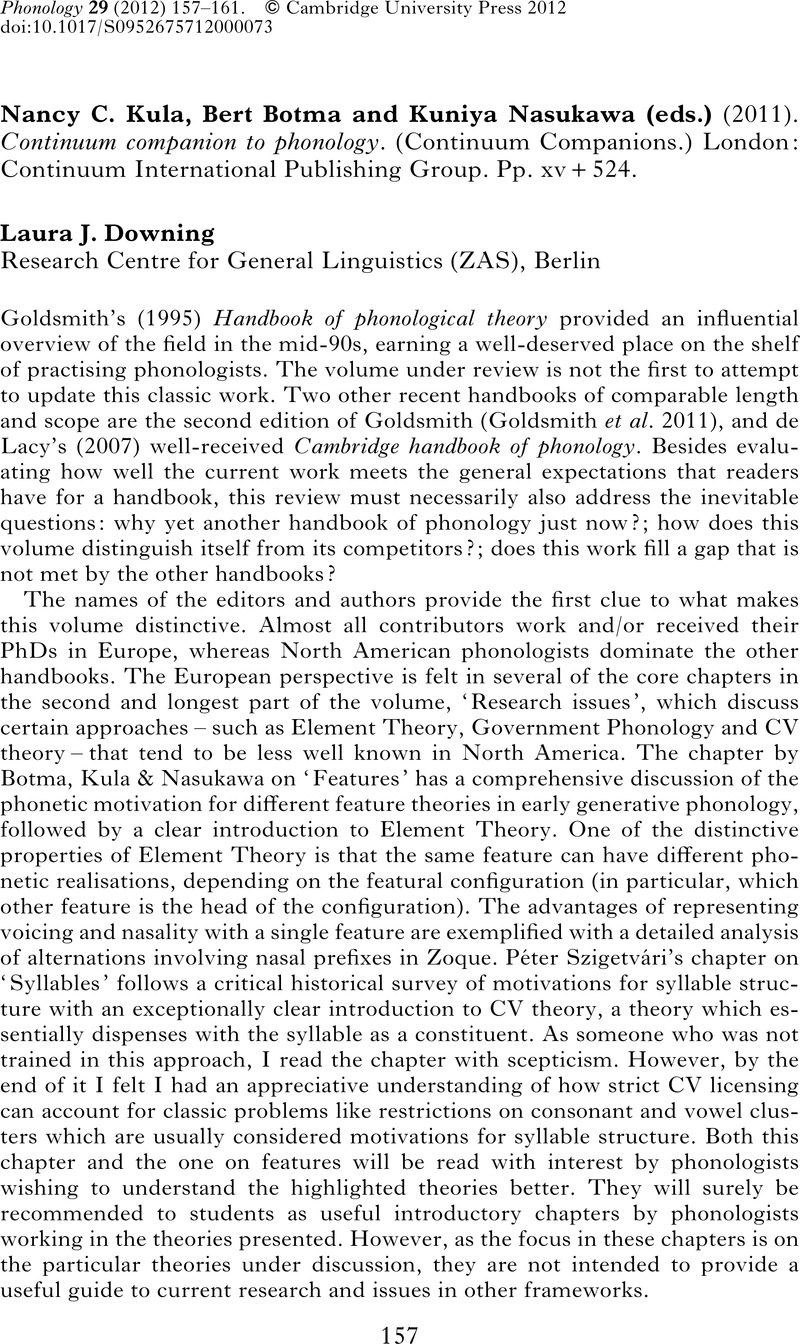No CrossRef data available.
Article contents
Nancy C. Kula, Bert Botma and Kuniya Nasukawa (eds.) (2011). Continuum companion to phonology. (Continuum Companions.) London: Continuum International Publishing Group. Pp. xv+524.
Published online by Cambridge University Press: 16 April 2012
Abstract
An abstract is not available for this content so a preview has been provided. Please use the Get access link above for information on how to access this content.

- Type
- Book Review
- Information
- Copyright
- Copyright © Cambridge University Press 2012
References
REFERENCES
Anderson, Stephen R. (1985). Phonology in the twentieth century: theories of rules and theories of representations. Chicago: University of Chicago Press.Google Scholar
Beckman, Mary E. & Kingston, John (1990). Introduction. In Kingston, John & Beckman, Mary E. (eds.) Papers in laboratory phonology I: between the grammar and physics of speech. Cambridge: Cambridge University Press. 1–16.Google Scholar
Boersma, Paul & Hamann, Silke (2009). Introduction: models of phonology in perception. In Boersma, Paul & Hamann, Silke (eds.) Phonology in perception. Berlin & New York: Mouton de Gruyter. 1–24.CrossRefGoogle Scholar
Chomsky, Noam & Halle, Morris (1968). The sound pattern of English. New York: Harper & Row.Google Scholar
de Lacy, Paul (ed.) (2007). The Cambridge handbook of phonology. Cambridge: Cambridge University Press.CrossRefGoogle Scholar
Goldsmith, John A. (ed.) (1995). The handbook of phonological theory. Cambridge, Mass. & Oxford: Blackwell.Google Scholar
Goldsmith, John A., Jason, Riggle & Yu, Alan C. L. (eds.) (2011). The handbook of phonological theory. 2nd edn.Malden, Mass.: Wiley-Blackwell.CrossRefGoogle Scholar


